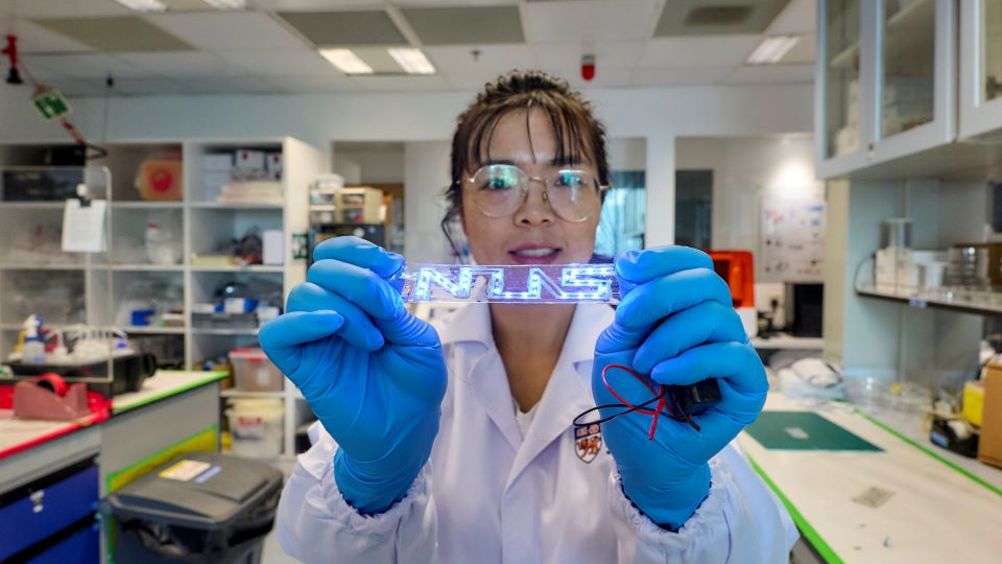Stretchable and highly conductive material shows promise for wearables
A new flexible, self-healing and highly conductive material suitable for stretchable electronic circuitry has been developed at the National University of Singapore (NUS).

The breakthrough could improve the performance of wearable technologies, soft robotics, and smart devices. The team’s findings are detailed in Advanced Materials.
Dubbed Bilayer Liquid-Solid Conductor (BiLiSC), the material can stretch up to 22 times its original length without sustaining a significant drop in its electrical conductivity. This first-of-its-kind property is claimed to enhance the comfort and effectiveness of the human-device interface, and opens up opportunities for use in healthcare wearables and other applications.
In a statement, Professor Lim Chwee Teck, research lead and director of the NUS Institute for Health Innovation & Technology, said, “We developed this technology in response to the need for circuitry with robust performance, functionality and yet ‘unbreakable’ for next-generation wearable, robotic and smart devices. The liquid metal circuitry using BiLiSC allows these devices to withstand large deformation and even self-heal to ensure electronic and functional integrity.”
MORE FROM WEARABLE TECHNOLOGY
BiLiSC consists of two layers, the first being a self-assembled pure liquid metal that can provide high conductivity under high strain, reducing the energy loss during power transmission and signal loss during signal transmission.
The second layer is a composite material containing liquid metal microparticles and it is able to repair itself; when a crack or tear occurs, the liquid metal flowing out from the microparticle can flow into the gap, allowing the material to heal itself almost instantaneously to retain its high conductivity.
To ensure that the innovation is commercially viable, the NUS team developed a scalable and cost-effective process to fabricate BiLiSC.
The NUS team demonstrated that BiLiSC can be made into various electrical components of wearable electronics, such as pressure sensors, interconnections, wearable heaters, and wearable antennas.
In laboratory experiments, a robotic arm using interconnections was quicker in detecting and responding to minute changes in pressure. In addition, the bending and twisting motion of the robotic arm did not impede the transmission of signals from the sensor to the signal processing unit, compared to another interconnection made with a non-BiLiSC material.
Register now to continue reading
Thanks for visiting The Engineer. You’ve now reached your monthly limit of news stories. Register for free to unlock unlimited access to all of our news coverage, as well as premium content including opinion, in-depth features and special reports.
Benefits of registering
-
In-depth insights and coverage of key emerging trends
-
Unrestricted access to special reports throughout the year
-
Daily technology news delivered straight to your inbox










Water Sector Talent Exodus Could Cripple The Sector
My local water company is Severn Trent which has a market capitalisation of £8.2 billion, made a pre-tax profit of £200 million in 2024 and is paying...